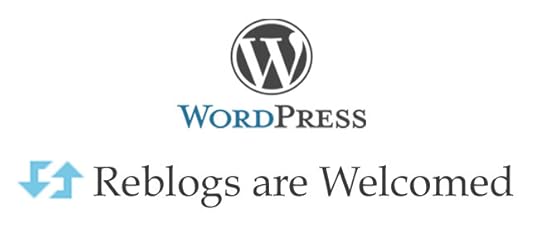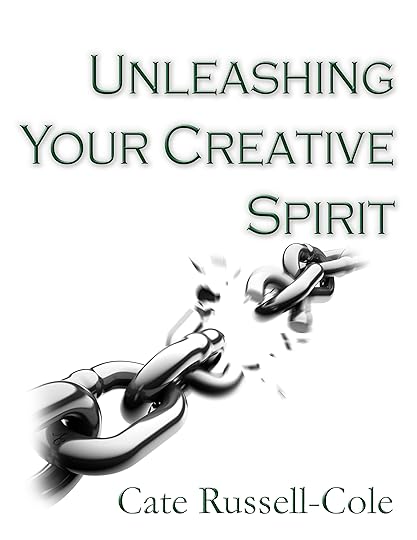Cate Russell-Cole's Blog, page 33
July 18, 2013
John Irving: Excellent Inspiration on the Craft of Writing

According to Wikipedia (I could not get John’s site to load), John Winslow Irving is an American novelist and Academy Award-winning screenwriter. Irving achieved critical and popular acclaim after the international success of The World According to Garp in 1978. Some of Irving’s novels, such as The Cider House Rules and A Prayer for Owen Meany, have been bestsellers. Five of his novels have been adapted to film. Several of Irving’s books (Garp,Meany, A Widow for One Year) and short stories have been set in and around Phillips Exeter Academy in Exeter, New Hampshire. He won the Academy Award for Best Adapted Screenplay in 1999 for his script The Cider House Rules.
The thrill of the blank page!
The Writer’s Craft
How John Works : this takes a few seconds to kick in, so don’t worry about the black screen, it doesn’t indicate death.
Filed under: "Dose of Inspiration" Video Tagged: author, books, characterisation, creativity, fiction, ideas, inspiration, John Irving, passion, resource, success, The World According to Garp, writer, writing








July 16, 2013
Protect Your Boundaries, Feed Your Writing, by Lauren Sapala

Protecting your time as a writer comes down to learning how to use one magic word:
“No.”
It sounds simple, right?
But “no” is one of the hardest words to say—especially when it comes to pleasing others, indulging in things that catch our interest, and falling prey to procrastination.
Because although we like think of our precious time as being stolen from us, the truth is that we’re usually the ones giving it away.
 When writers resolve to make more time for creative work, we frequently choose the strategy of setting up guard against distractions. But after a while we let down our guard, because it’s exhausting to keep fighting off every distraction as if it’s yet another mosquito. And everyone suffers from this approach. You feel harassed, and your family and friends feel deprived. It’s also very likely that your writing ends up feeling like more of a burden than a source of joy.
When writers resolve to make more time for creative work, we frequently choose the strategy of setting up guard against distractions. But after a while we let down our guard, because it’s exhausting to keep fighting off every distraction as if it’s yet another mosquito. And everyone suffers from this approach. You feel harassed, and your family and friends feel deprived. It’s also very likely that your writing ends up feeling like more of a burden than a source of joy.
However, we can shift our strategy. We can refocus the perspective we hold toward our time and the way we implement boundaries to protect it. Instead of constant gate-keeping against distraction, we can build a gate that distraction never even gets past. By setting firm, appropriate boundaries around our time, we shift out of resentment and into empowerment, and everyone ultimately gets more.
You can start with two meetings a week.
The first meeting is between you and your writing. This meeting should ideally last for one hour. A quiet library or low-key café are great places to be by yourself, while benefiting from the white-noise buzz from others. It’s also a good idea to set the time and day for this meeting as a permanent fixture in your schedule so that there’s no putting it off or getting around it.
I meet with my writing every Thursday night at 6:30pm at a little café with delicious food and soft music playing in the background. I set my phone to silent and turn off my email. After three years of keeping this meeting everyone in my life now knows that, when it comes to Thursday nights around six, I’m busy.
Your second meeting of the week is your meeting with…you. This meeting is with your own creativity, and it works best with a little spontaneity thrown in. Give yourself two hours a week to do whatever you want, as long as it feeds your creative flame. If you want to sit in the park and do nothing, go for it. If you want to sit at home and finger paint, do it. If you want to go to the theater and watch a movie that you’re dying to see, give yourself free reign. The key is to block off these hours as a “meeting” and treat them as such.
 I meet with my creativity on Saturday and Sunday mornings before anyone else in the house is awake. Sometimes I walk to the beach and meditate, or sometimes I read or watch a movie by myself. It might seem to anyone else that I’m not doing much of anything, but as an artist I know that this time with myself is crucial to my writing work. It’s my time to imagine and dream.
I meet with my creativity on Saturday and Sunday mornings before anyone else in the house is awake. Sometimes I walk to the beach and meditate, or sometimes I read or watch a movie by myself. It might seem to anyone else that I’m not doing much of anything, but as an artist I know that this time with myself is crucial to my writing work. It’s my time to imagine and dream.
By using the term “meeting” you are telling yourself and others that your writing, and your time, is important and it should be respected. People understand that most meetings are necessary, that they are scheduled for a purpose, and that the people involved are trying to achieve valuable results. When you use language that carries these inferences it gets the point across that, when you’re in a meeting, you’re focused on important work and simply unavailable.
When you finish reading this post, sit down and think about your schedule for the next week. Zero in on one hour for writing, and then nail down another couple for yourself. Circle this time in red. From now on, your creative time has a sign on it that reads: Writing Zone. No Trespassing.
From this point forward, your time to imagine and write and dream gets first priority.

Follow Lauren

Blog: www.laurensapala.com
Twitter: @losapala
This blog post is Copyright Lauren Sapala 2013. All rights are reserved Internationally. You may not reproduce it in any form, in part of whole, without the author’s prior written permission. That includes usage in forms such as print, audio and digital imaging including pdf, jpg, png etc. A fee may be requested for re-use if it is for a commercial venture. Images used are from Open Clipart Sources and may be re-used.
Filed under: "Writing Lessons from the Writing Life", Writing Resources Tagged: author, blogging, challenge, conflict, encouragement, fiction, goals, Indie publishing, inspiration, Lauren Sapala, motivation, priorities, problem solving, success, time, time management, writer, writing








July 14, 2013
Writing for yourself First
 Reblogged from Self-Published Authors Helping Other Authors:
Reblogged from Self-Published Authors Helping Other Authors:
I was reading on a forum today where an author asked how he could get the joy of writing back. He was worn out and bored with everything he started. The thought of writing another word was akin to pulling his own teeth with a pair of pliers.
As I read through the comments it became very clear to me, despite all the great suggestions given on how to help him, that his true problem wasn't writer's block or burn out.
I cringe when I read posts about writing for an audience. You do that with marketing, writing should be for YOU. Thanks for this post Stephannie.
Writing Inspiration from Crazy Sources: But It Works!
 Creativity is fed from our subconscious minds, thus it works in indirect ways. Often the Muse will bestow ideas on you from crazy sources. Ideas will come at you from seeing or reading things which are totally unrelated. The more you can think outside the box, the more ideas you will be able to harness.
Creativity is fed from our subconscious minds, thus it works in indirect ways. Often the Muse will bestow ideas on you from crazy sources. Ideas will come at you from seeing or reading things which are totally unrelated. The more you can think outside the box, the more ideas you will be able to harness.
My husband and I discovered Rhett and Link on Youtube. These guys podcast frequently and have a great video on 14 words the English language needs and doesn’t have. It was a great laugh… plus a great point. We need to look outside our own cultural box for words which will inspire us.
Follow these guys, they will make your day! http://rhettandlink.com
The video makes a great introduction to my promised list of out of “old time, out of common use” words for this month.
Below are July’s words. It’s your choice how to use them: whether as writing prompt topics, random idea generators to get unstuck, or you may wish to incorporate them into your work in progress. If you can’t use the word, you can benefit from the definition behind it. You will find something for every genre whether Romance, Steampunk, Science Fiction, Memoir or Paranormal. Please note that like this blog, all spelling is Australian.
Flittermouse: a bat.
Portreeve: the Chief Magistrate of a Port.
Termagant: a supposed Saracen idol appearing in old plays as a blustering character. Tumultuous, turbulent, quarrelsome, scolding, shrewish; a boisterous, brawling turbulent person.
Chirurgeon: a working with the hand, a surgeon.
Pelagic: inhabiting the deep sea.
The Rhett and Link logo belongs to them. It’s only being used here to promote their work.
This blog post by Cate Russell-Cole is licensed under a Creative Commons Attribution-NonCommercial-ShareAlike 3.0 Unported License. You are free to share and adapt it.
Filed under: What's On, Writing Resources Tagged: author, creativity, dictionary, fiction, idea, inspiration, old world, prompt, resource, Rhett and Link, uncommon, Words, writer, writing








July 11, 2013
Plot tips: One Way to Write About Phobias
Phobias are the worst kind of nightmare: they strike when you are awake. No noise from outside your bedroom window will wake you and release you from your nightmare. There may be no escape. They can utterly disable your most heroic character. I’d like to describe a phobia to you from my own experience, challenging the myth that all phobias are irrational.
 I have a problem with needles. I can watch television programs on surgery and be fine with scalpels, saws etc., but if a doctor picks up a needle, I cannot watch. As a child I was put through 36 blood tests and two invasive tests in two days. Once, I was threatened that if I moved, a needle could go right through my arm. I was only ten years old. After that, no one could come at me with any form of needle.
I have a problem with needles. I can watch television programs on surgery and be fine with scalpels, saws etc., but if a doctor picks up a needle, I cannot watch. As a child I was put through 36 blood tests and two invasive tests in two days. Once, I was threatened that if I moved, a needle could go right through my arm. I was only ten years old. After that, no one could come at me with any form of needle.
I will fight you as if you were holding a gun to my head. I break into a cold sweat; shake as my pulse rate rises; start breathing heavily; and my brain goes into a narrow focus, looking for an escape route. For me, it’s so opposed to my normal behavior, that it’s like turning into a werewolf. I have frightened pre-warned, seasoned Pathologists with my desperation to escape. Hysteria is not out of the question if you try to hold me down. It is pure torture: all for a small, quick pain which is pathetically minimal, compared to my migraines! It’s crazy, but it’s not crazy. Phobias can be a paradigm.
People are understanding. Many have offered to hold my hand to make it better. They don’t realize that it wouldn’t help; they’d just become an enemy to fight. It is about safety and control. You cannot distract me, bribe me, talk me out of it, threaten me: I will write off your opinion and leave, because getting that blood test done matters to you, but not to me. I got away. I survived without harm. I won! I have little control over it, despite the fact that I want and need to control it.

So I have a phobia I can partially rationalise. Yes, logically, I know not every needle would hurt me. Then how do you explain phobias which seem to come out of the blue? The lady with a phobia of birds who rarely leaves her house; someone who is paralysed by snakes but has never met one; a person terrified of any form of paper; or someone with a fear of heights when they have never actually fallen? Somewhere, a memory must be laying hidden. Something could have been said or shown to them which instilled fear. Perhaps they had a terrifying experience which is forgotten? You would think a big trauma would be remembered, but it doesn’t work that way. The brain can shut scares out as a defence mechanism. The incident which gave rise to the phobia, may not be able to be recalled.
How people cope with fear has no formula. Some will “feel the fear and do it anyway,” even if they are in serious danger. Others will hide from a bee that is a few feet away. How do you explain the difference? You can’t. That makes fear a fascinating area for writers to explore.
P.S. I have utterly hated writing and editing this post. It was written last October and I have pushed it back and back as I don’t want to see it on my blog. That is how strongly I feel about it. Plus you will notice that the syringes above do not have a visible needle on them. They are capped! Research has been done on needle fears as they are so prevalent, particularly if Dental appointments are involved. It is thought there may be an involuntary physiological reaction which kicks in as the body is pierced which gives rise to this phobia. In the future, who knows how many other phobias there may be more scientific explanations for. For more information, please visit: http://www.needlephobia.com

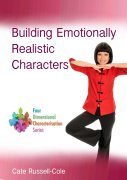 This post is a chapter from “Building Emotionally Realistic Characters.” Whether you are writing fiction, memoir, poetry, short stories, plays, screenplays or music, the ability of your work to touch others depends on how they relate to the messages you are conveying. What they see and hear must be something they have encountered and can relate to easily; or it must be shared in another way they can grasp. Often that is done through the only common element every human being has: knowing what emotions feel like.
This post is a chapter from “Building Emotionally Realistic Characters.” Whether you are writing fiction, memoir, poetry, short stories, plays, screenplays or music, the ability of your work to touch others depends on how they relate to the messages you are conveying. What they see and hear must be something they have encountered and can relate to easily; or it must be shared in another way they can grasp. Often that is done through the only common element every human being has: knowing what emotions feel like.
You can read a story about events which have never happened to you, but still laugh or cry over what is occurring with the characters. Why? Because you know what it is to experience pain, joy, fear, rejection, envy, fatigue, laughter, grief, ecstasy or doubt too. This is the magic that makes stories work. The tricky part, is conjuring up the right spell or your reader will not be fooled.
This e-book is a full of the incantations you need to bring your characters to life in a way that is emotionally realistic. There are no short cuts to “happily ever after” endings, which leave your plot line hollow and sounding fake. The book contains introductory level psychology which will give you an insight into how emotions and events weave us together into a whole or hurting person.
Chapters include change, motivation, recovering from trauma, post traumatic growth, grief, shock, arrogance and insecurity, escapism, fatal flaws, phobias, shame, violence, suicide prevention, personality types, schizophrenia and multiple personality disorder. Available from Amazon Kindle.
This article / blog post is Copyright Cate Russell-Cole 2013. All rights are reserved Internationally. You may not reproduce it in any form, in part of whole, without Cate’s prior written permission. That includes usage in forms such as print, audio and digital imaging including pdf, jpg, png etc. A fee may be requested for re-using her work if it is for a commercial venture. Link sharing and Pinterest pins are most welcome as long as Cate is the attributed Author.
No images on this blog may be copied, captured, or altered for your own purpose without the consent of the originating owner. Where images are marked as being iStockphoto.com images, they are paid for and licenced to Cate for use on this blog. If you take them, iStockphoto.com has the right to take legal action against you for Copyright Infringement.
Please see the Blog Content and Image Copyright page of this blog for further information in regards to Guest Posts, other images, Cate’s checks on infringements and Liability.
Filed under: Writing Resources Tagged: behaviour, characterisation, fear, fiction, ideas, Indie publishing, mind, myth, novel, phobia, plot, psychology, stress, writer, writing








July 9, 2013
Smart, Personalised Book Marketing: Why Didn’t I Think of That?
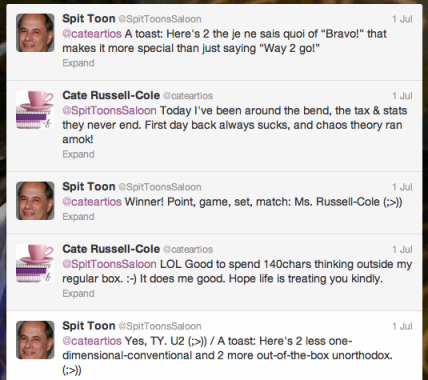 I am marketing resistant. I have studied it, worked in the area and can see through most techniques like glass. So when something original comes along, it catches my eye. In this case, it was awhile before I cottoned on to the fact I was being marketed to. It was so much fun: and genuine, friendly contact.
I am marketing resistant. I have studied it, worked in the area and can see through most techniques like glass. So when something original comes along, it catches my eye. In this case, it was awhile before I cottoned on to the fact I was being marketed to. It was so much fun: and genuine, friendly contact.
One of my favourite Tweet pals is Eric Kobb Miller. Frequently I get these great rhymes sent to me as a toast, and it’s become my personal challenge to answer them in rhyme (which I stink at. I am a lousy poet, and boy, do I know it!)
I noticed that Eric sends these out to a number of people, and thought, “how great.” That’s obviously his thing. He replies back. I look for his contact as it brightens my day. Then I clicked on his blog link and got quite a surprise. My favourite toasts were book promotions. As I said above, I am normally immune to marketing. Eric really impressed me on this one… His tweets back up his books: and his books are as great as his tweets!
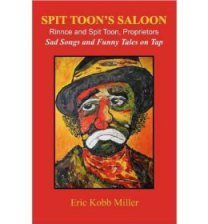 Lydia agrees with me: “I laughed harder in the first ten pages of this book than I can honestly recall laughing at any other book before. But there’s more to it than laughter…real poignancy unfolds in this book with a thin, delicate thread of comedy running throughout. I’m looking forward to more work from this author, whose whimsical prose and excellent delivery are but a promise of more to come.”
Lydia agrees with me: “I laughed harder in the first ten pages of this book than I can honestly recall laughing at any other book before. But there’s more to it than laughter…real poignancy unfolds in this book with a thin, delicate thread of comedy running throughout. I’m looking forward to more work from this author, whose whimsical prose and excellent delivery are but a promise of more to come.”
We’re all struggling to find new ways to market books. It’s a tough market and it is flooded. Finding our own voice and standing out in the crowd is not easy, but Eric has done it with grace, friendliness and persistence! Those last two are the key ingredients.
So please, check out Eric’s feed and his books, say hello, send him a toast and learn from his great example. There are new ways of putting your work out there. You just need to be yourself to find them.
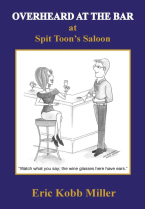
Eric on Twitter: https://twitter.com/SpitToonsSaloon
Author Site / Blog: http://spittoonssaloon.blogspot.com.au
Buy Eric’s books: http://www.amazon.com and http://productsearch.barnesandnoble.com
This blog post by Cate Russell-Cole is licensed under a Creative Commons Attribution-NonCommercial-ShareAlike 3.0 Unported License. You are free to share and adapt it.
Filed under: Writing Resources Tagged: Amazon, Barnes and Noble, book marketing, contact, content marketing, ebook, Eric Kobb Miller, friendship, humour, inspiration, originality, persistence, promotion, role model, Twitter, writer, writing








July 7, 2013
Where to Get Free Images for Blog Posts
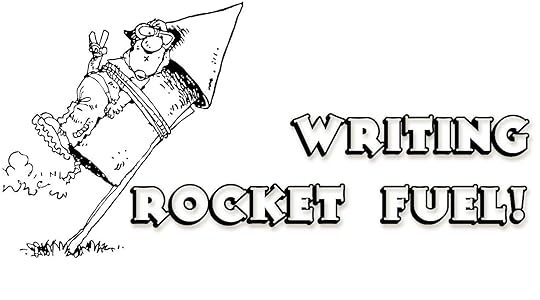 Getting images can be hard. There are price jumps on stock photo sites that I can’t keep up with. Even if your blog is commercial, you can use the listed sites. Some images on them are for sale, but a great deal of content is free.
Getting images can be hard. There are price jumps on stock photo sites that I can’t keep up with. Even if your blog is commercial, you can use the listed sites. Some images on them are for sale, but a great deal of content is free.
http://www.sxc.hu (Note: there are some usage restrictions set by users.)
http://www.pachd.com/free-images/household-images-2.html
Christian graphics: http://www.creationswap.com/
Free clipart: http://www.free-clipart-pictures.net ; http://www.clker.com and http://openclipart.org
Go to Flickr and do an advanced search under “Creative Commons Licence” and choose those options that are appropriate for your blog. Don’t forget to link back to the originating photographer as a courtesy.
Please remember that not every image you see in search engines, such as Google, is free to use: they list every image. Grabbing and using them, especially if they have watermarks or copyright information on them, is definitely not on. It is graphic piracy and you can be sued.
If you know of more sources, please share them in the comments section.
Filed under: Writing Resources Tagged: blogging tools, clipart, free images, stock photos, Writing Rocket Fuel








July 4, 2013
Plot Ideas: Repetition

Image from http://www.flickr.com/photos/bigpresh/ under a Creative Commons Licence.
It’s a comforting idea that the past can stay in the past, never to haunt us again. However, whether ours or belonging to another, the past often comes back in ways which are spooky and uncomfortable. Does anyone remember this song by Split Endz?
“History never repeats,
I tell myself before I go to sleep.
Don’t say the words you might regret,
I’ve lost before you know I can’t forget.
There was a girl I used to know,
She dealt my love a savage blow,
I was so young, too blind to see,
But anyway that’s History.”
I am focussed on the negative here, as no writer needs a ‘happy tales’ plot line. There are two aspects to history repeating I’d like to inspire you with: nature and lack of self-nurture.
Nature

Image from http://www.flickr.com/photos/rmgimages/ under Creative Commons Licence.
One of my goals for this year was to research Celtic history and write blog posts on it. Of course, the best laid plans got wildly out of control. I got hooked on “Who Do You Think You Are,” the History Channel and anything with a Celtic design attached! The one area which made me sit up and take notice, was how often people who had traced their ancestry saw their own traits in others: sometimes several generations back up the line. To scare me even further, these came completely out of nowhere! There were no family stories, or other ways these people could have known about their ancestor’s attitudes, character traits, skills or talents. They were passed down in the DNA, like it or not!
I like to be the Master and Commander of my own life. The idea that we can be unknowingly influenced by great great granddad makes me squirm. Realistically, we all have the choice on whether or not we follow along with our gut inclinations and crazy ideas, regardless of where they come from. However, I can’t help but ponder what a great plot line it is to link a dirty deed or an act of bravery to a family trait that comes to light via a serendipitous event. Sharpen your pencils! The possibilities are delightful.
Lack of Self-Nurture
 If I had to add another music clip to this point, it would be “I’ve Done All the Dumb Things” by Paul Kelly. “In the middle of a dream… I’ve lost my shirt, I’ve pawned my rings, I’ve done all the dumb things! I’ve melted wax to fix my wings, I’ve done all the dumb things! …And I get all your good advice, It doesn’t stop me from going through these things twice, I see the knives out, I turn my back, I hear the train coming, I stay right on that track…”
If I had to add another music clip to this point, it would be “I’ve Done All the Dumb Things” by Paul Kelly. “In the middle of a dream… I’ve lost my shirt, I’ve pawned my rings, I’ve done all the dumb things! I’ve melted wax to fix my wings, I’ve done all the dumb things! …And I get all your good advice, It doesn’t stop me from going through these things twice, I see the knives out, I turn my back, I hear the train coming, I stay right on that track…”
We have all made bad choices; often, despite our better judgement, we make them more than once. Even when we know we’ve taken the wrong turn, sometimes it takes awhile before the lesson is properly absorbed into the brain, or we find the inner resources to make changes. In the meantime, we dig ourselves in deeper and deeper… and to make Split Endz’s nightmare even worse, history does indeed repeat!
Our greatest mistakes always make the best reads. Enjoy your writing journey…
This article / blog post is Copyright Cate Russell-Cole 2013. All rights are reserved Internationally. You may not reproduce it in any form, in part of whole, without Cate’s prior written permission. That includes usage in forms such as print, audio and digital imaging including pdf, jpg, png etc. A fee may be requested for re-using her work if it is for a commercial venture. Link sharing and Pinterest pins are most welcome as long as Cate is the attributed Author.
No images on this blog may be copied, captured, or altered for your own purpose without the consent of the originating owner.
Filed under: Writing Resources Tagged: author, characterisation, DNA, fiction, history, ideas, Indie publishing, inspiration, nature vs nurture, plot, Self-nurture, Split Endz, writer, writing








July 2, 2013
Writing How-To Ebooks for Writers
Amazon Kindle has programs and apps which allow you to read it’s books on any PC, Mac, iPad, iPhone or Android device. You don’t require a special reader, so you won’t miss out. Also, these books can be borrowed if you are an Amazon Prime member. Cheers!
Creating and Resolving Conflict in Fiction
 This book dissects conflict into its component parts; looks at how it works and helps you generate conflict plot-lines and themes which will add richness and realism to your work. The principles apply to any kind of fiction, regardless of the length, characters or genre. It is written by a writing teacher who also has a background in counselling.
This book dissects conflict into its component parts; looks at how it works and helps you generate conflict plot-lines and themes which will add richness and realism to your work. The principles apply to any kind of fiction, regardless of the length, characters or genre. It is written by a writing teacher who also has a background in counselling.
Topics covered include:
A Word of Encouragement for Writers
The Most Important Thing About Conflict
How to Fuel Conflicts and Misunderstandings
What Character Traits Go With What Type of Person?
Human Behaviour Is All About Patterns
Using Power Dynamics
Not Too Easy To Swallow: Avoiding Nauseating Resolutions
Making or Breaking Character Relationships
Secrecy and the Death of Trust
When Do Good Guys Morph Into Foes?
For a sample chapter of the book, please click here.
Creating and Resolving Conflict in Fiction is the first book in the Four Dimensional Characterisation Series. The series has been written to give writers an insight into the aspects of psychology that are the most invaluable for fiction writers. It will assist you in creating personality traits and behaviour patterns which make your characters realistic, unique and believable. This book in the series is focussed on conflict in any kind of relationship. Available from Amazon Kindle.
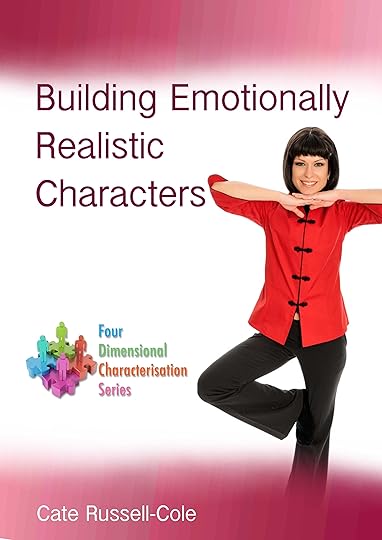 Building Emotionally Realistic Characters
Building Emotionally Realistic CharactersWhether you are writing fiction, memoir, poetry, short stories, plays, screenplays or music, the ability of your work to touch others depends on how they relate to the messages you are conveying. What they see and hear must be something they have encountered and can relate to easily; or it must be shared in another way they can grasp. Often that is done through the only common element every human being has: knowing what emotions feel like.
You can read a story about events which have never happened to you, but still laugh or cry over what is occurring with the characters. Why? Because you know what it is to experience pain, joy, fear, rejection, envy, fatigue, laughter, grief, ecstasy or doubt too. This is the magic that makes stories work. The tricky part, is conjuring up the right spell or your reader will not be fooled.
This e-book is a full of the incantations you need to bring your characters to life in a way that is emotionally realistic. There are no short cuts to “happily ever after” endings, which leave your plot line hollow and sounding fake. The book contains introductory level psychology which will give you an insight into how emotions and events weave us together into a whole or hurting person.
Topics include: change, motivation, healing emotional trauma, post traumatic growth, grief, shock, super-egos and inferiority, escapism, fatal flaws, phobias, shame, violence, character types, suicide prevention, schizophrenia and multiple personality disorder. This is the second book in the Four Dimensional Characterisation Series.
Unleashing Your Creative Spirit
“Thanks, I enjoyed opening up to my creativity interesting that when I started looking into my own creativity I found a dearth of information and help just kind of flowed to me”
“Very enjoyable course; inspiring and motivating.”
This e-book will help you turn your dreams into reality! It explores the process and practical aspects of creativity; and has been written for artists, writers, musicians, dancers, gardeners, cooks, craft lovers: anyone trying to tap into their creative potential. It looks at the mental processing behind creativity; philosophies that drive how we think about and assess our creative worth; creative character traits; historical role models; an extensive bibliography and web link list and more. The content is practical, not just analytical. It will give you ideas on how to move forward in your creative life.
Capturing the Muse
Quieting the Internal Censor
Building A Creative Space
Working With Failure
Finding Direction
Techniques To Use
Available for download from Amazon Kindle.
 Phoenix Rising: Conquering the Stresses of the Writer’s Life
Phoenix Rising: Conquering the Stresses of the Writer’s LifeI’ve worked with writers both as an autobiography teacher and as a mentor. In 2011 I began a blog project to equip, encourage and share resources with writers of all genres; and which addresses the challenges and frustrations of writers in the digital age. This book contains the best of those articles. It has been written for all genres of writers and all forms of publication.
Chapters Include:
Measuring the Value of Your Work in a Digital Age
Healing Creative Injuries
Creative Dark Matter: Clear Out What’s Holding You Down
Bomb Proofing Your Writer’s Ego
Handling Criticism
Moving Ahead in Small Steps: Why Revolutions Rarely Work
Fat Free, Guilt Free Blogging Goals
Escaping Mental Quicksand: Your “Time of Readiness”
Is Your Writing Life Stuck Under Your Mouse?
Balancing the Blogging Load
Writers and Depression: Debunking the Stereotypes
Writers Should Be Bathed in Blue: Boosting Your Productivity
Which Wins? Creative Pleasure or Word Count?
Petwrification: A Health Warning for All Writers
For a sample of the book, please click here.
I chose the image and title of the phoenix rising from the ashes in response to the battles writers face. I personally relate to the need to choose to rise upwards: away from the fire and into a clear sky to start again. If your creative energy is low, your word count flagging or the downsides of being a writer are taking away your joy, I hope this book will give you new strength and hope with which to spread your wings and find new freedom.
Phoenix Rising: Conquering the Stresses of the Writer’s Life, is available from Amazon Kindle.
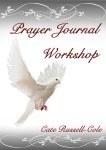 Prayer Journal Workshop
Prayer Journal WorkshopPrayer Journal Workshop has been designed to encourage you to start and maintain your own prayer journal: a way of praying on paper. The workshop content is a mixture of inspiration, how-to and practical exercises. It is suitable for any age group, from fourteen years upwards. It is specifically Christian and is available through Amazon Kindle.
For a sample page from the book, please click here.
Filed under: What's On Tagged: Amazon, books, conflict, creativity, encouragement, fiction, free, ideas, inspiration, Kindle, motivation, novel, plot, problem solving, resource, writer, writing








Writing How-To Ebooks for Writers are Free: July 4th – 8th
To celebrate the 4th of July, my ebooks for writers are free from July 4th to the 8th, across all Amazon territories. Amazon Kindle has programs and apps which allow you to read it’s books on any PC, Mac, iPad, iPhone or Android device. You don’t require a special reader, so you won’t miss out.
Happy 4th July everyone in the United States and thank you for your support of this blog. Happy reading!
Creating and Resolving Conflict in Fiction
 This book dissects conflict into its component parts; looks at how it works and helps you generate conflict plot-lines and themes which will add richness and realism to your work. The principles apply to any kind of fiction, regardless of the length, characters or genre. It is written by a writing teacher who also has a background in counselling.
This book dissects conflict into its component parts; looks at how it works and helps you generate conflict plot-lines and themes which will add richness and realism to your work. The principles apply to any kind of fiction, regardless of the length, characters or genre. It is written by a writing teacher who also has a background in counselling.
Topics covered include:
A Word of Encouragement for Writers
The Most Important Thing About Conflict
How to Fuel Conflicts and Misunderstandings
What Character Traits Go With What Type of Person?
Human Behaviour Is All About Patterns
Using Power Dynamics
Not Too Easy To Swallow: Avoiding Nauseating Resolutions
Making or Breaking Character Relationships
Secrecy and the Death of Trust
When Do Good Guys Morph Into Foes?
For a sample chapter of the book, please click here.
Creating and Resolving Conflict in Fiction is the first book in the Four Dimensional Characterisation Series. The series has been written to give writers an insight into the aspects of psychology that are the most invaluable for fiction writers. It will assist you in creating personality traits and behaviour patterns which make your characters realistic, unique and believable. This book in the series is focussed on conflict in any kind of relationship. Available from Amazon Kindle.
 Building Emotionally Realistic Characters
Building Emotionally Realistic CharactersWhether you are writing fiction, memoir, poetry, short stories, plays, screenplays or music, the ability of your work to touch others depends on how they relate to the messages you are conveying. What they see and hear must be something they have encountered and can relate to easily; or it must be shared in another way they can grasp. Often that is done through the only common element every human being has: knowing what emotions feel like.
You can read a story about events which have never happened to you, but still laugh or cry over what is occurring with the characters. Why? Because you know what it is to experience pain, joy, fear, rejection, envy, fatigue, laughter, grief, ecstasy or doubt too. This is the magic that makes stories work. The tricky part, is conjuring up the right spell or your reader will not be fooled.
This e-book is a full of the incantations you need to bring your characters to life in a way that is emotionally realistic. There are no short cuts to “happily ever after” endings, which leave your plot line hollow and sounding fake. The book contains introductory level psychology which will give you an insight into how emotions and events weave us together into a whole or hurting person.
Topics include: change, motivation, healing emotional trauma, post traumatic growth, grief, shock, super-egos and inferiority, escapism, fatal flaws, phobias, shame, violence, character types, suicide prevention, schizophrenia and multiple personality disorder. This is the second book in the Four Dimensional Characterisation Series.
Unleashing Your Creative Spirit
“Thanks, I enjoyed opening up to my creativity interesting that when I started looking into my own creativity I found a dearth of information and help just kind of flowed to me”
“Very enjoyable course; inspiring and motivating.”
This e-book will help you turn your dreams into reality! It explores the process and practical aspects of creativity; and has been written for artists, writers, musicians, dancers, gardeners, cooks, craft lovers: anyone trying to tap into their creative potential. It looks at the mental processing behind creativity; philosophies that drive how we think about and assess our creative worth; creative character traits; historical role models; an extensive bibliography and web link list and more. The content is practical, not just analytical. It will give you ideas on how to move forward in your creative life.
Capturing the Muse
Quieting the Internal Censor
Building A Creative Space
Working With Failure
Finding Direction
Techniques To Use
Available for download from Amazon Kindle.
 Phoenix Rising: Conquering the Stresses of the Writer’s Life
Phoenix Rising: Conquering the Stresses of the Writer’s LifeI’ve worked with writers both as an autobiography teacher and as a mentor. In 2011 I began a blog project to equip, encourage and share resources with writers of all genres; and which addresses the challenges and frustrations of writers in the digital age. This book contains the best of those articles. It has been written for all genres of writers and all forms of publication.
Chapters Include:
Measuring the Value of Your Work in a Digital Age
Healing Creative Injuries
Creative Dark Matter: Clear Out What’s Holding You Down
Bomb Proofing Your Writer’s Ego
Handling Criticism
Moving Ahead in Small Steps: Why Revolutions Rarely Work
Fat Free, Guilt Free Blogging Goals
Escaping Mental Quicksand: Your “Time of Readiness”
Is Your Writing Life Stuck Under Your Mouse?
Balancing the Blogging Load
Writers and Depression: Debunking the Stereotypes
Writers Should Be Bathed in Blue: Boosting Your Productivity
Which Wins? Creative Pleasure or Word Count?
Petwrification: A Health Warning for All Writers
For a sample of the book, please click here.
I chose the image and title of the phoenix rising from the ashes in response to the battles writers face. I personally relate to the need to choose to rise upwards: away from the fire and into a clear sky to start again. If your creative energy is low, your word count flagging or the downsides of being a writer are taking away your joy, I hope this book will give you new strength and hope with which to spread your wings and find new freedom.
Phoenix Rising: Conquering the Stresses of the Writer’s Life, is available from Amazon Kindle.
 Prayer Journal Workshop
Prayer Journal WorkshopPrayer Journal Workshop has been designed to encourage you to start and maintain your own prayer journal: a way of praying on paper. The workshop content is a mixture of inspiration, how-to and practical exercises. It is suitable for any age group, from fourteen years upwards. It is specifically Christian and is available through Amazon Kindle.
For a sample page from the book, please click here.
Filed under: What's On Tagged: Amazon, books, conflict, creativity, encouragement, fiction, free, ideas, inspiration, Kindle, motivation, novel, plot, problem solving, resource, writer, writing











